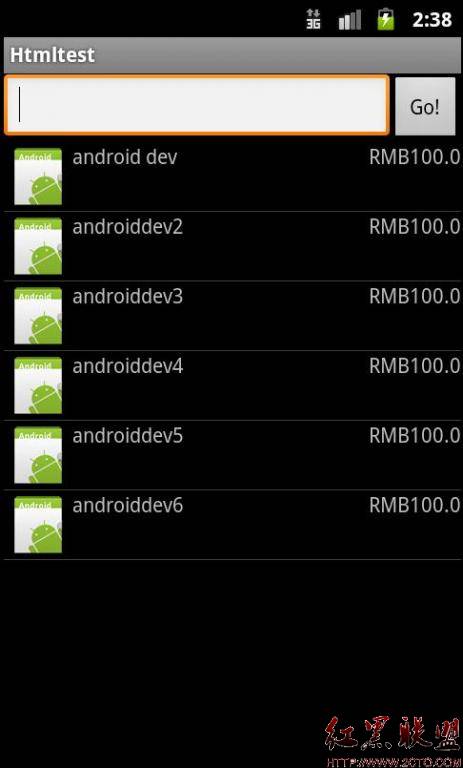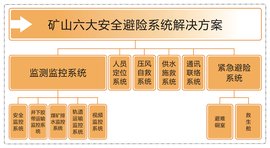蓝牙,是一种支持设备短距离通信(一般10m内,且无阻隔媒介)的无线电技术。能在包括移动电话、PDA、无线耳机、笔记本电脑、蓝牙打印机等众多设备之间进行无线信息交换。
1. 使用蓝牙的响应权限
| 1 |
<STRONG> <uses-permission android:name="android.permission.BLUETOOTH" /> |
| 2 |
<uses-permission android:name="android.permission.BLUETOOTH_ADMIN" /> </STRONG> |
2. 配置本机蓝牙模块
在这里首先要了解对蓝牙操作一个核心类BluetoothAdapter
| 01 |
BluetoothAdapter adapter = BluetoothAdapter.getDefaultAdapter(); |
| 03 |
Intent intent = new Intent(BluetoothAdapter.ACTION_REQUEST_ENABLE); |
| 04 |
startActivityForResult(intent, 0x1); |
| 09 |
//打开本机的蓝牙发现功能(默认打开120秒,可以将时间最多延长至300秒) |
| 10 |
discoverableIntent.putExtra(BluetoothAdapter.EXTRA_DISCOVERABLE_DURATION, 300);//设置持续时间(最多300秒)Intent discoveryIntent = new Intent(BluetoothAdapter.ACTION_REQUEST_DISCOVERABLE); |
3.搜索蓝牙设备
使用BluetoothAdapter的startDiscovery()方法来搜索蓝牙设备
startDiscovery()方法是一个异步方法,调用后会立即返回。该方法会进行对其他蓝牙设备的搜索,该过程会持续12秒。该方法调用后,搜索过程实际上是在一个System Service中进行的,所以可以调用cancelDiscovery()方法来停止搜索(该方法可以在未执行discovery请求时调用)。
请求Discovery后,系统开始搜索蓝牙设备,在这个过程中,系统会发送以下三个广播:
ACTION_DISCOVERY_START:开始搜索
ACTION_DISCOVERY_FINISHED:搜索结束
ACTION_FOUND:找到设备,这个Intent中包含两个extra fields:EXTRA_DEVICE和EXTRA_CLASS,分别包含BluetooDevice和BluetoothClass。
我们可以自己注册相应的BroadcastReceiver来接收响应的广播,以便实现某些功能
| 01 |
// 创建一个接收ACTION_FOUND广播的BroadcastReceiver |
| 02 |
private final BroadcastReceiver mReceiver = new BroadcastReceiver() { |
| 03 |
public void onReceive(Context context, Intent intent) { |
| 04 |
String action = intent.getAction(); |
| 06 |
if (BluetoothDevice.ACTION_FOUND.equals(action)) { |
| 08 |
BluetoothDevice device = intent.getParcelableExtra(BluetoothDevice.EXTRA_DEVICE); |
| 09 |
// 将设备名称和地址放入array adapter,以便在ListView中显示 |
| 10 |
mArrayAdapter.add(device.getName() + "\n" + device.getAddress()); |
| 14 |
// 注册BroadcastReceiver |
| 15 |
IntentFilter filter = new IntentFilter(BluetoothDevice.ACTION_FOUND); |
| 16 |
registerReceiver(mReceiver, filter); // 不要忘了之后解除绑定 |
4. 蓝牙Socket通信
如果打算建议两个蓝牙设备之间的连接,则必须实现服务器端与客户端的机制。当两个设备在同一个RFCOMM channel下分别拥有一个连接的BluetoothSocket,这两个设备才可以说是建立了连接。
服务器设备与客户端设备获取BluetoothSocket的途径是不同的。服务器设备是通过accepted一个incoming connection来获取的,而客户端设备则是通过打开一个到服务器的RFCOMM channel来获取的。
服务器端的实现
通过调用BluetoothAdapter的listenUsingRfcommWithServiceRecord(String, UUID)方法来获取BluetoothServerSocket(UUID用于客户端与服务器端之间的配对)
调用BluetoothServerSocket的accept()方法监听连接请求,如果收到请求,则返回一个BluetoothSocket实例(此方法为block方法,应置于新线程中)
如果不想在accept其他的连接,则调用BluetoothServerSocket的close()方法释放资源(调用该方法后,之前获得的BluetoothSocket实例并没有close。但由于RFCOMM一个时刻只允许在一条channel中有一个连接,则一般在accept一个连接后,便close掉BluetoothServerSocket)
| 01 |
private class AcceptThread extends Thread { |
| 02 |
private final BluetoothServerSocket mmServerSocket; |
| 04 |
public AcceptThread() { |
| 05 |
// Use a temporary object that is later assigned to mmServerSocket, |
| 06 |
// because mmServerSocket is final |
| 07 |
BluetoothServerSocket tmp = null; |
| 09 |
// MY_UUID is the app's UUID string, also used by the client code |
| 10 |
tmp = mBluetoothAdapter.listenUsingRfcommWithServiceRecord(NAME, MY_UUID); |
| 11 |
} catch (IOException e) { } |
| 16 |
BluetoothSocket socket = null; |
| 17 |
// Keep listening until exception occurs or a socket is returned |
| 20 |
socket = mmServerSocket.accept(); |
| 21 |
} catch (IOException e) { |
| 24 |
// If a connection was accepted |
| 26 |
// Do work to manage the connection (in a separate thread) |
| 27 |
manageConnectedSocket(socket); |
| 28 |
mmServerSocket.close(); |
| 34 |
/** Will cancel the listening socket, and cause the thread to finish */ |
| 35 |
public void cancel() { |
| 37 |
mmServerSocket.close(); |
| 38 |
} catch (IOException e) { } |
客户端的实现
通过搜索得到服务器端的BluetoothService
调用BluetoothService的listenUsingRfcommWithServiceRecord(String, UUID)方法获取BluetoothSocket(该UUID应该同于服务器端的UUID)
调用BluetoothSocket的connect()方法(该方法为block方法),如果UUID同服务器端的UUID匹配,并且连接被服务器端accept,则connect()方法返回
注意:在调用connect()方法之前,应当确定当前没有搜索设备,否则连接会变得非常慢并且容易失败
| 01 |
<STRONG> private class ConnectThread extends Thread { |
| 02 |
private final BluetoothSocket mmSocket; |
| 03 |
private final BluetoothDevice mmDevice; |
| 05 |
public ConnectThread(BluetoothDevice device) { |
| 06 |
// Use a temporary object that is later assigned to mmSocket, |
| 07 |
// because mmSocket is final |
| 08 |
BluetoothSocket tmp = null; |
| 11 |
// Get a BluetoothSocket to connect with the given BluetoothDevice |
| 13 |
// MY_UUID is the app's UUID string, also used by the server code |
| 14 |
tmp = device.createRfcommSocketToServiceRecord(MY_UUID); |
| 15 |
} catch (IOException e) { } |
| 20 |
// Cancel discovery because it will slow down the connection |
| 21 |
mBluetoothAdapter.cancelDiscovery(); |
| 24 |
// Connect the device through the socket. This will block |
| 25 |
// until it succeeds or throws an exception |
| 27 |
} catch (IOException connectException) { |
| 28 |
// Unable to connect; close the socket and get out |
| 31 |
} catch (IOException closeException) { } |
| 35 |
// Do work to manage the connection (in a separate thread) |
| 36 |
manageConnectedSocket(mmSocket); |
| 39 |
/** Will cancel an in-progress connection, and close the socket */ |
| 40 |
public void cancel() { |
| 43 |
} catch (IOException e) { } |
连接管理(数据通信)
分别通过BluetoothSocket的getInputStream()和getOutputStream()方法获取InputStream和OutputStream
使用read(bytes[])和write(bytes[])方法分别进行读写操作
注意:read(bytes[])方法会一直block,知道从流中读取到信息,而write(bytes[])方法并不是经常的block(比如在另一设备没有及时read或者中间缓冲区已满的情况下,write方法会block)
| 01 |
<STRONG> private class ConnectedThread extends Thread { |
| 02 |
private final BluetoothSocket mmSocket; |
| 03 |
private final InputStream mmInStream; |
| 04 |
private final OutputStream mmOutStream; |
| 06 |
public ConnectedThread(BluetoothSocket socket) { |
| 08 |
InputStream tmpIn = null; |
| 09 |
OutputStream tmpOut = null; |
| 11 |
// Get the input and output streams, using temp objects because |
| 12 |
// member streams are final |
| 14 |
tmpIn = socket.getInputStream(); |
| 15 |
tmpOut = socket.getOutputStream(); |
| 16 |
} catch (IOException e) { } |
| 23 |
byte[] buffer = new byte[1024]; // buffer store for the stream |
| 24 |
int bytes; // bytes returned from read() |
| 26 |
// Keep listening to the InputStream until an exception occurs |
| 29 |
// Read from the InputStream |
| 30 |
bytes = mmInStream.read(buffer); |
| 31 |
// Send the obtained bytes to the UI Activity |
| 32 |
mHandler.obtainMessage(MESSAGE_READ, bytes, -1, buffer) |
| 34 |
} catch (IOException e) { |
| 40 |
/* Call this from the main Activity to send data to the remote device */ |
| 41 |
public void write(byte[] bytes) { |
| 43 |
mmOutStream.write(bytes); |
| 44 |
} catch (IOException e) { } |
| 47 |
/* Call this from the main Activity to shutdown the connection */ |
| 48 |
public void cancel() { |
| 51 |
} catch (IOException e) { } |



